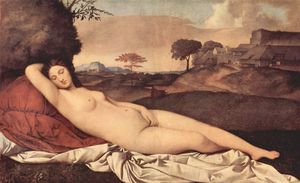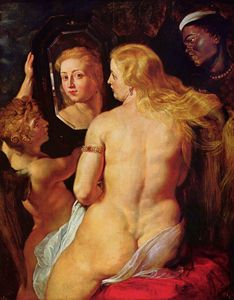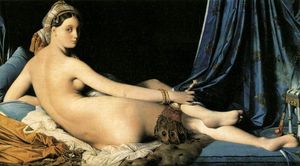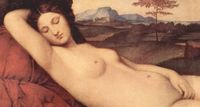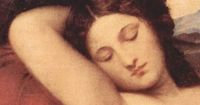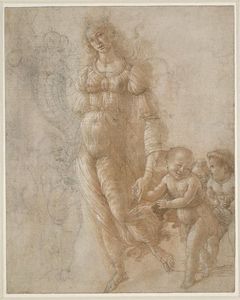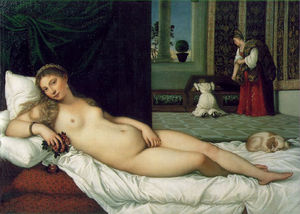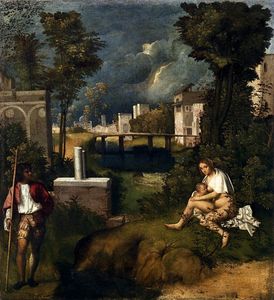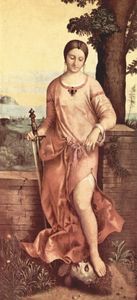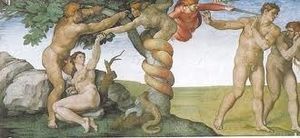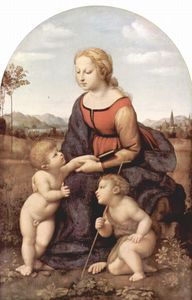Sleeping Venus
- Date of Creation:
- circa 1510
- Alternative Names:
- Dresden Venus
- Height (cm):
- 108.50
- Length (cm):
- 175.00
- Medium:
- Oil
- Support:
- Canvas
- Subject:
- Figure
- Art Movement:
- Renaissance
- Created by:
- Current Location:
- Dresden, Germany
- Displayed at:
- Gemäldegalerie Alte Meister
- Owner:
- Gemäldegalerie Alte Meister
- Sleeping Venus Page's Content
- Story / Theme
- Analysis
- Related Paintings
- Artist
- Art Period
- Bibliography
Sleeping Venus Story / Theme
Created by Giorgione in his mid-thirties, the Sleeping Venus - also known as the Dresden Venus - is one of the principal paintings the artist is remembered for. It is almost universally accepted as a work started by the Venetian and finished by Titian after his master's untimely death.
One of Giorgione's final works, Sleeping Venus shows a nude woman whose curves mirror those of the background hills. This painting is one which the artist devoted a great deal of time to and, featuring a nude, it marked an art revolution.
It is common knowledge that Giorgione was obsessed with the natural form and so in this image, with the landscape mimicking the body, it is likely to be another innovative work borne out of the artist's imagination. This sense of mystery leaves the piece open to interpretation, reinforcing Giorgione's innovations and talent.
Sleeping Venus not only intrigued viewers and artists alike but also inspired other painters such as Rubens, Ingres and Botticelli.
Sleeping Venus Analysis
Composition:
Discreet and suggestive, this painting leads the viewer's eye from the head and eyes, across the breasts and down to the hand, covering the subject's modesty. This relates to the curve of the earth and the landscape we see in the background.
Mood, tone and emotion:
Sleeping Venus is a painting displaying warm tones and the beauty of nature. Combining this with the fabrics that the goddess is laying on it emphasizes the richness of the work. The use of color and light adds emotion to the image and helps to further show the warmth that Giorgione was looking to convey.
Use of technique:
Sleeping Venus underwent x-ray testing and it was discovered that Cupid had been painted on to the work - kneeling at the subject's feet - but this was over painted following damage. It is believed that this took place in 1843, many years after both Giorgione's and Titian's passing. There may also have been a reworking of the face as it does not seem to not fit the style of either artist.
Many critics see the character of the landscape in this painting as Titianesque, and some even try to attribute the entire painting to him. However, one must remember that Titian was as big of a fan of Giorgione as the master was to him, so many things could have blurred inspirations and interpretations.
Color palette:
The sheets that the Sleeping Venus is resting on differ from the rest of the work. Instead of the warming tones that we see throughout the piece, these are painted using colder tones such as silver and are a rigid addition to an otherwise flowing and serene image.
Sleeping Venus Related Paintings
Sleeping Venus Artist
Without any commissioner, Sleeping Venus was likely to have been completed in Giorgione's home or workshop. At the age of 33, Giorgione worked on this piece during his later years and had done all he could with the painting by 1510. Finished by Titian, it remains one of his most well-known works.
The subject of a nude was a revelation in the art world and many argue that Sleeping Venus inspired other painters to take up the same theme. Rudolf Wittkower, the German art historian, perhaps summarized the opinion of American and European scholars with a rather Arcadian view of the piece. He saw Giorgione as a poetic painter and a dreamer who evoked nostalgia that was adopted by future artists. The Longhian view of Sleeping Venus is that it is a measure of his greatness and expressive ambiguity that shows his creative side.
With an overwhelming passion for natural beauty Giorgione decided that everything he produced would be used to showcase the splendor of nature and he did so with consummate ease and brilliance.
Such was his amazing talent that he created forms of the living that were so harmonious and carefully produced using fresco or oil that it was suggested he infused life into his work and figures. This set him apart from almost all the painters that had gone before him - and left many after in great awe of his works.
Modern art critics generally agree that Giorgione was a pillar of the Renaissance and a pioneer in the world of art.
Sleeping Venus Art Period
In art history, the High Renaissance was a time denoting the pinnacle of the visual arts in the Italian Renaissance. Most agree that the High Renaissance began in the 1490s, more or less with Leonardo's fresco of The Last Supper in Milan and ended in 1527 with the sacking of Rome by the troops of Charles V.
Renaissance in French means 'rebirth', and is the name given to artists such as Giorgione who were seen to be at the head of an intellectual and artistic evolution.
In Italy, the High Renaissance was a time of outstanding artistic production and the best-known examples of Italian Renaissance painting derive from artists such as Giorgione, Leonardo da Vinci, Michelangelo and a young Raphael.
The portrayal of mood and radiant colors of Giorgione's work and those of his followers, such as Titian, perfectly represent the High Renaissance style in Venice during this period.
Sleeping Venus Bibliography
To learn more about Giorgione's career please refer to the following recommended sources.
• Cook, Herbert. Giorgione. Dodo Press, 2007
• Dal Pozzolo, Enrico Maria. Giorgione. Motta, 2009
• Hartt, F. & Wilkins, D. G. History of Italian Renaissance Art, 2007
• Lucco, Mauro. Giorgione. GALLIMARD, 1997
• Pignatti, T. & Pedrocco, F. Giorgione. LEVI, 1999
• Vasari, Giorgio. The Lives of the Artists, Oxford University Press. 1991

